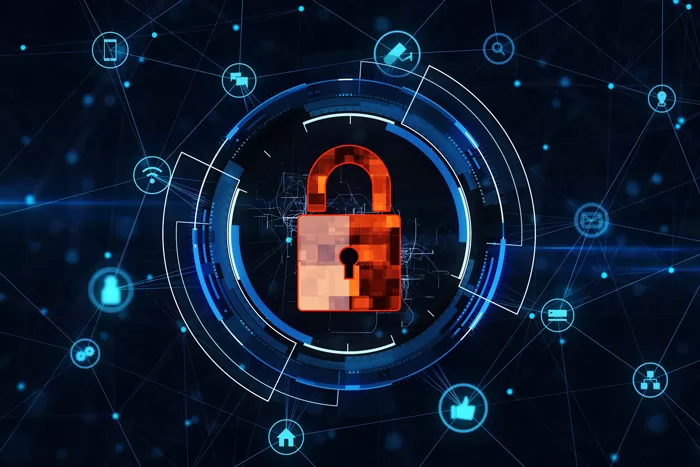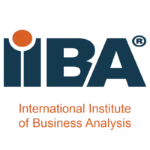Soc as a Service (SOCaaS), also known as Managed Security Operations Center (SOC), is an outsourcing model where organizations entrust their cybersecurity operations to a third-party provider. In this arrangement, the service provider establishes and manages a Security Operations Center (SOC) to monitor, detect, and respond to cyber threats and incidents on behalf of the organization. SOCaaS combines advanced security technologies, expert personnel, and robust processes to deliver comprehensive cybersecurity services. Here are some key points to consider regarding SOCaaS:
Which Cyber Threats are Monitored by SOCaaS?
SOCaaS providers monitor various cyber threats, including but not limited to:
Malware and ransomware attacks
Network intrusions and unauthorized access attempts
Distributed Denial of Service (DDoS) attacks
Insider threats and data breaches
Phishing and social engineering attacks
Vulnerability exploits and patch management issues
Advanced persistent threats (APTs) and targeted attacks
clslearn offers you the best courses in the course of CSA Certified SOC Analyst
Why do Organizations Need Managed Services for Security Operations?

Organizations opt for SOCaaS for several reasons:
Expertise and Knowledge: SOCaaS providers employ skilled cybersecurity professionals who specialize in threat detection, incident response, and security best practices. Organizations benefit from their expertise without the need for extensive in-house security resources.
Cost Efficiency: Building an in-house SOC can be costly in terms of infrastructure, technology, personnel, and ongoing training. SOCaaS offers a more cost-effective option by leveraging shared resources and spreading costs across multiple clients.
24/7 Monitoring and Response: SOCaaS providers offer round-the-clock monitoring and response capabilities, ensuring timely detection and mitigation of security incidents. This continuous monitoring helps organizations stay ahead of emerging threats.
Advanced Technologies and Tools: SOCaaS providers utilize advanced security technologies, such as Security Information and Event Management (SIEM) systems, intrusion detection systems, and threat intelligence platforms. These tools enhance threat visibility and facilitate proactive threat hunting.
What are the Benefits of SOC as a service (SOCaaS)?
Some key benefits of SOCaaS include:
Enhanced Threat Detection: SOCaaS providers employ advanced threat detection techniques, including behavior analytics, anomaly detection, and machine learning algorithms, to identify potential threats that may go unnoticed by traditional security measures.
Rapid Incident Response: SOCaaS offers swift incident response capabilities, aiming to minimize the impact of security incidents. Providers follow predefined incident response processes, ensuring timely containment, investigation, and remediation.
Scalability and Flexibility: SOCaaS can scale its services based on the organization’s requirements. As the organization grows or faces changing threat landscapes, SOCaaS providers can adapt and expand their offerings accordingly.
Compliance and Regulatory Support: SOCaaS providers help organizations meet compliance requirements by implementing security controls, conducting audits, and generating reports required for regulatory compliance.
Get to know about: THE TOP CYBERSECURITY SKILLS REQUIRED FOR JOBS
Factors to Consider When Designing a SOC:

When designing a SOC or selecting a SOCaaS provider, organizations should consider factors such as:
Security Expertise: Ensure the provider has a skilled team of cybersecurity professionals with experience in threat detection, incident response, and security operations.
Technology Stack: Evaluate the provider’s security technologies, including SIEM platforms, threat intelligence feeds, and automation capabilities, to ensure they align with your organization’s needs.
Industry Experience: Consider whether the provider has experience in your industry and understands the specific cybersecurity challenges and compliance requirements relevant to your sector.
Why a Managed SOC is Important:
A managed SOC provides organizations with several advantages:
Proactive Threat Monitoring: A managed SOC actively monitors networks, systems, and applications for potential threats, allowing for early detection and response.
Rapid Incident Response: With a managed SOC, organizations have access to a dedicated team of security professionals who can respond swiftly to security incidents, minimizing potential damage and downtime.
Continuous Improvement: A managed SOC continuously evolves its capabilities to combat emerging threats, leveraging insights gained from monitoring multiple environments and industry trends.
Challenges of a Managed SOC:
While a managed SOC offers numerous benefits, there are some challenges to consider:
Integration with Existing Systems: Integrating a managed SOC with an organization’s existing security infrastructure and processes can be complex and require careful planning and coordination.
Data Confidentiality and Privacy: Entrusting a third-party provider with sensitive security data requires thorough vetting and ensuring the provider has robust data protection measures in place.
Communication and Collaboration: Effective communication and collaboration between the organization and the managed SOC provider are crucial to ensure a shared understanding of security requirements, incident response processes, and reporting mechanisms.
Implementing Soc as a service can provide organizations with a comprehensive and proactive approach to cybersecurity, leveraging expert resources and advanced technologies to combat evolving cyber threats.
get to know about: WHAT IS RED HAT OPENSHIFT VIRTUALIZATION?
Some additional information about SOC as a Service (SOCaaS):

Soc as a service (SOCaaS) is gaining popularity among organizations of all sizes and industries due to its numerous advantages. Let’s delve deeper into the key aspects of SOCaaS:
Customization: SOCaaS can be tailored to meet the specific needs of an organization. The service provider works closely with the organization to understand its unique security requirements, compliance standards, and industry-specific challenges. This ensures that the SOCaaS solution is aligned with the organization’s goals and effectively addresses its security concerns.
Continuous Monitoring and Threat Detection: SOCaaS providers employ a combination of real-time monitoring, log analysis, and threat intelligence feeds to detect potential security incidents. By monitoring network traffic, system logs, and security events, they can identify suspicious activities and indicators of compromise. This proactive approach allows for early detection and timely response to mitigate the impact of security breaches.
Incident Response and Remediation: SOCaaS providers have well-defined incident response processes in place. When a security incident occurs, the SOC team swiftly initiates the response plan, containing the incident, investigating its root cause, and implementing necessary remediation measures. This rapid incident response minimizes the potential damage and helps organizations recover quickly.
Compliance Support: SOCaaS providers assist organizations in meeting regulatory compliance requirements. They implement security controls and practices that align with industry standards and regulations such as GDPR, HIPAA, PCI DSS, and others. SOCaaS services often include generating compliance reports and conducting audits to ensure adherence to the required standards.
Scalability and Resource Optimization: SOCaaS offers scalability, allowing organizations to adjust their security operations as their needs evolve. As businesses grow or encounter changes in the threat landscape, SOCaaS providers can easily scale resources, technologies, and personnel to accommodate the increased demands. This flexibility eliminates the need for organizations to invest in additional infrastructure or hire and train additional security personnel.
Access to Advanced Technologies: SOCaaS providers leverage state-of-the-art security technologies and tools such as Security Information and Event Management (SIEM) systems, threat intelligence platforms, and behavioral analytics. These technologies enhance threat visibility, enable rapid detection of complex threats, and improve overall security posture.
Cost-Effectiveness: One of the primary advantages of SOCaaS is its cost-effectiveness. Establishing an in-house SOC can be prohibitively expensive for many organizations, requiring significant investments in infrastructure, personnel, training, and ongoing maintenance costs. SOCaaS eliminates these upfront costs by offering a subscription-based model where organizations pay for the services they need, reducing the financial burden while still benefiting from robust security capabilities.
Conclusion:
As organizations face increasingly sophisticated cyber threats, SOC as a service (SOCaaS) has emerged as a valuable solution to enhance cybersecurity capabilities. By leveraging the expertise, advanced technologies, and round-the-clock monitoring of a managed SOC, organizations can proactively detect and respond to potential security incidents. SOCaaS offers benefits such as enhanced threat detection, rapid incident response, scalability, and cost efficiency. However, organizations should carefully consider factors such as security expertise, technology stack, and industry experience when designing a SOC or selecting a SOCaaS provider. By addressing the challenges associated with a managed SOC, organizations can effectively strengthen their security posture and protect their valuable assets in today’s evolving threat landscape.
























